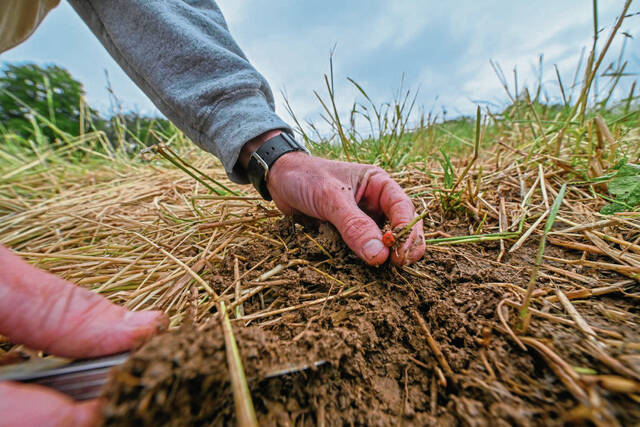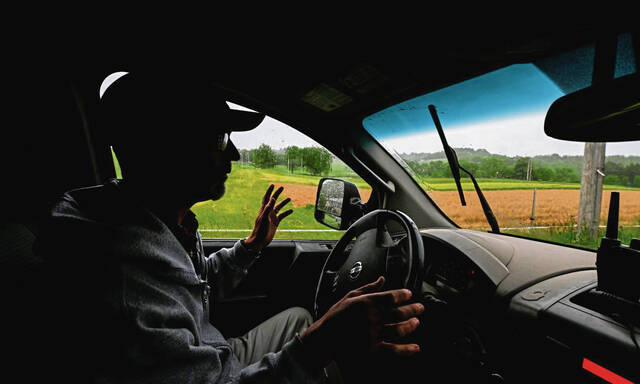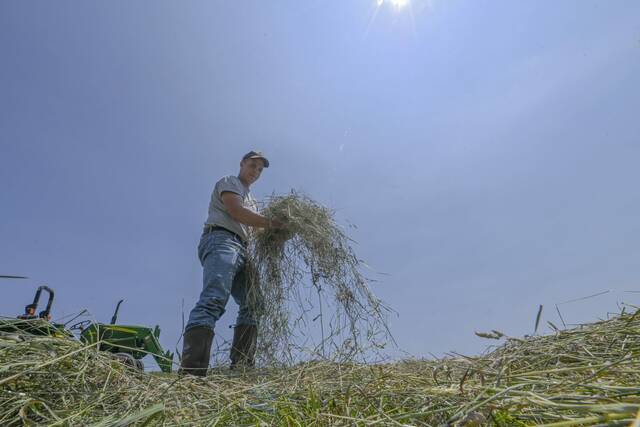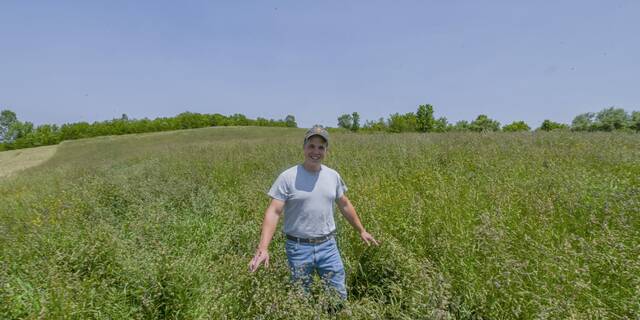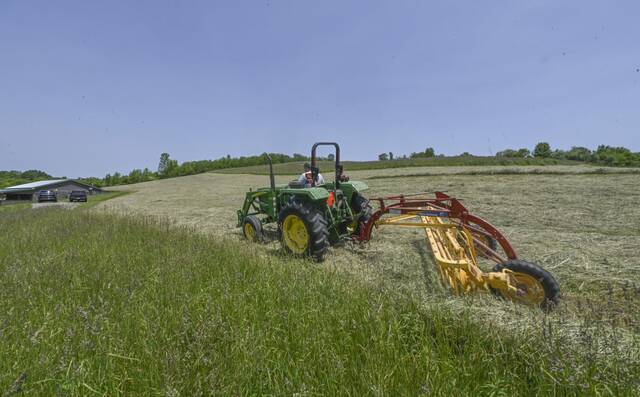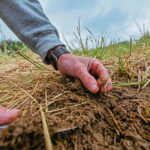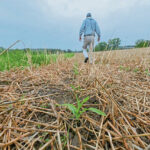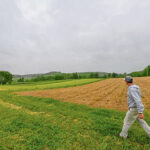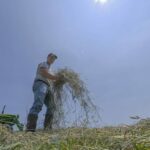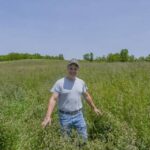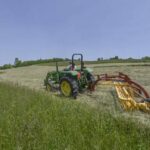A rainy day is not always good news for Hempfield farmer Neil Palmer.
“This is a time of year when we want to be out frequently doing tillage, planting, seeding, cultivation, all of that,” said Palmer, who has sweet corn, tomatoes, peppers, onions and cabbage planted. “When we’ve got consistent rain, it’s hard to reach the point where the soil’s dry enough to work.”
For farmers, Palmer said, the challenge is finding windows of opportunity to get out into the field and work. The larger issue for newly planted crops is a spate of cool weather.
“If it’s cool and rainy, the seed will rot in the ground,” Palmer said. “My crops are surviving, but they’re not thriving yet. When the heat and sunshine comes — and it will — those crops are going to turn right around. It could end up being a great season.”
Seeds require optimal temperatures and moisture to properly germinate, according to the University of Maryland Extension. Three pathogens in particular — phytophthora, pythium and rhizoctonia — are water molds, and contribute to what is referred to as “damping off.”
Seeds and seedlings are more likely to contract one or all of the pathogens in cool, moist weather.
“You usually worry about your corn seed rotting in the ground,” Murrysville farmer Herb Gearhard said. “I don’t have my corn seed planted yet, but I think that might end up working out all right with the weather we’ve had.”
While there have been a lot of rain days this spring — 14 in April and 16 in May, with five days in mid-May being the longest stretch of dry weather — the region is still very close to the annual average for precipitation this time of year.
“May totals were 4.1 inches of rain, about a quarter-inch over the typical average,” National Weather Service Meteorologist Andrew Kienzle said of the greater Pittsburgh region. “In April we had 4.42 inches, an inch over the average. But the record for April is 8.11 inches. We were a lot closer to that last year when we got 7.93 inches of rain.”
In Buffalo Township, farmer Kevin Jarosinski is looking for some consistency, especially as he works to properly dry hay to feed his livestock.
“Climate change is the real issue we’re having,” said Jarosinski, who raises beef cattle, poultry and pork. “We suffered a ton of damage from the April 29 microburst, and since then we’ve had such unbelievably cool temperatures.”
Jarosinski said his temperature gauge at the farm read 38 degrees on June 2. The region’s record low for that day is 36 degrees, and the average minimum temperature historically is 56 degrees, according to the National Weather Service.
“Thirty-eight degrees in early June is crazy,” he said. “In March, we had 80-degree temperatures — record highs — and then it got cold again. The next couple days we’re going to get haze from the Canadian wildfires. A decade ago, no one was talking about that.”
Gearhard said he, too, has had difficulty preparing hay.
“We need to get three or four dry days in a row,” he said. “I did get a good bit of hay mowed the other day, but it was tough to get things dry.”
“This season, things have just been very, very volatile,” Jarosinski said.


